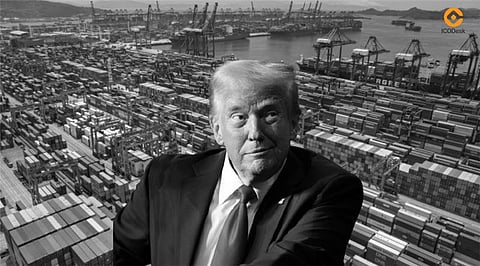

According to Barclays reports, nearly three-quarters of Indian exports to the United States are now at a serious risk after the Trump administration introduced 50% import tariffs. Effective since August 28, these tariffs apply to an estimated value of 55 billion worth of goods, which reflects about 13% of India's total merchandise exports and about 70% of its US-bound exports.
Most of these are key export industries, including electrical machinery, apparel, gems, and jewellery. Although smartphones, pharmaceuticals, and petroleum products are not subject to this tariff increase in the US market, most other high-volume Indian exports do not enjoy such exemptions. This puts the Indian exporters at a disadvantage, particularly when compared to other nations like Bangladesh and Sri Lanka, which are currently enjoying a much lower effective tariff rate.
During the first half of 2025, India saw a substantial growth in its exports to the US, which grew by 28.1% in March and 20.1% in July. However, due to the full implementation of tariffs and low global demand, Barclays anticipates a fall in the second half of the year.
The apparel industry of India, which already incurs existing duties, has to pay a total tariff of 60% in addition, twice the amount paid by some of the regional competitors. This causes a lot of cost strain to labour-intensive industries such as leather and footwear, which heavily depend on the US market.
The Indian government is now reviewing several support measures, including the potential revival of the Emergency Credit Line Guarantee Scheme (ECLGS) and renewal of RoSCTL for the apparel industry. To cope with the effect of tariff shock, exporters have also demanded better interest subvention and increased RoDTEP duty refunds.
India has been keen on diversifying its export destinations through Free Trade Agreements to reduce its overdependence on the US market. The UAE and the UK have become the second-largest markets in India in terms of a range of major export categories. Continuous FTA negotiations with the EU, Chile, and other partners seek to open up new markets to affected sectors.
India and the US are continuing with bilateral talks. The most important meetings will be planned during Prime Minister Modi's visits to the UN General Assembly in September and President Trump's visit to the Quad Summit in India in October. Such interactions can offer an avenue to renegotiate tariff conditions and bring about a balance of trade.